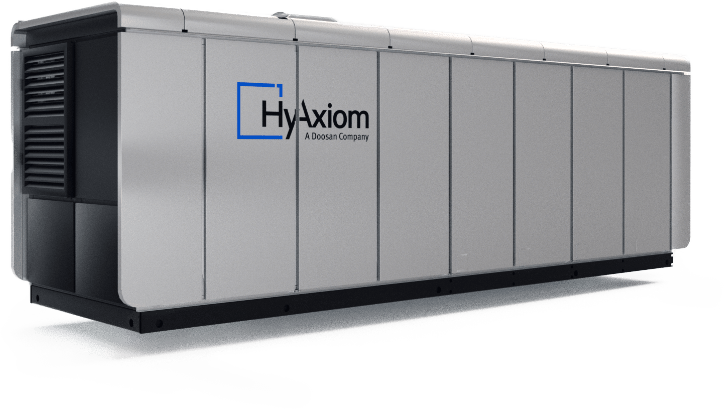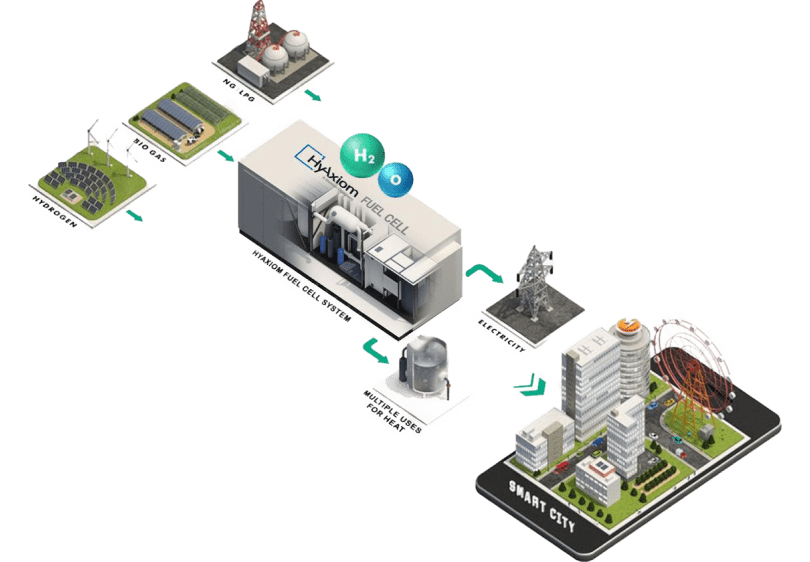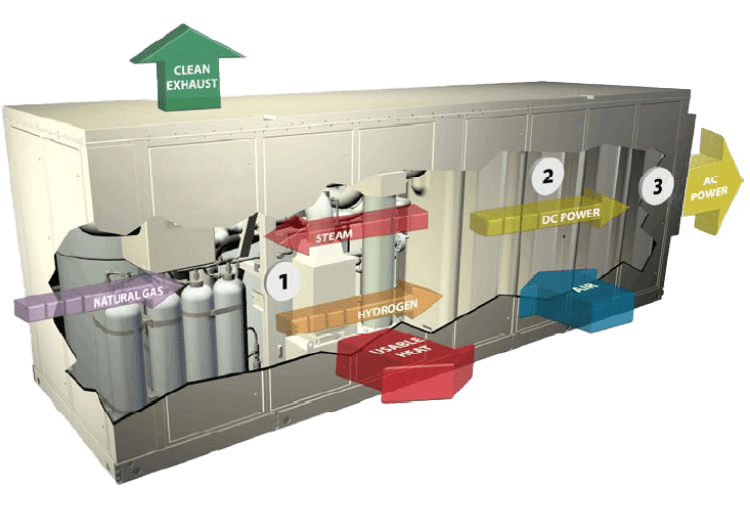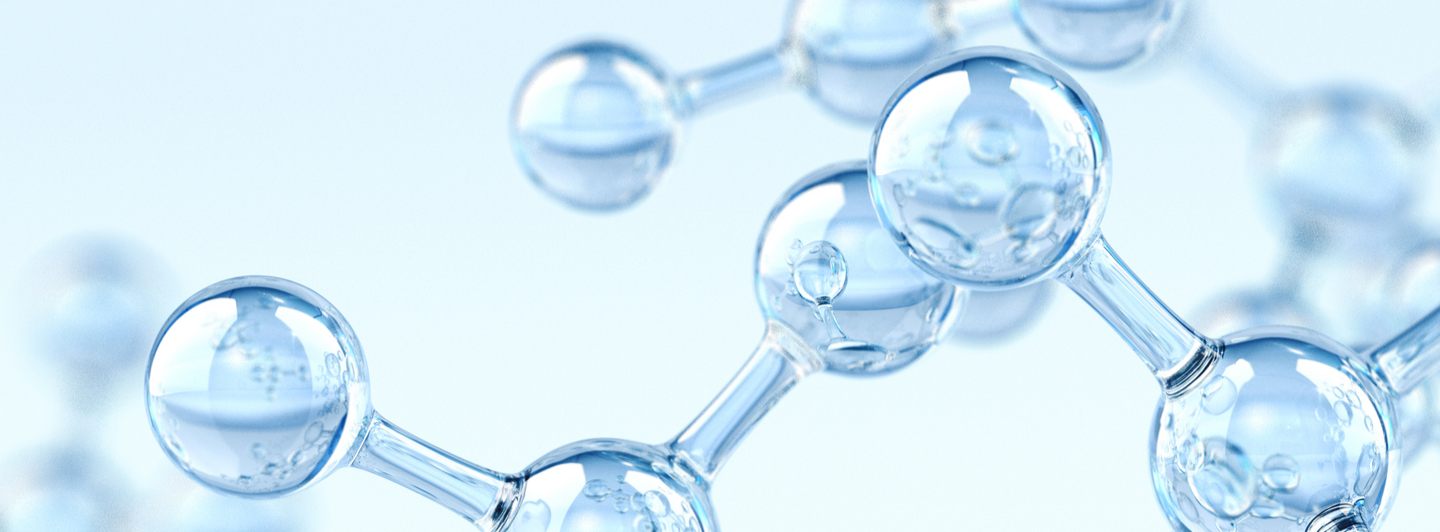
Our Fuel Cell Technology
HyAxiom's fuel cell system, called PureCell® M400, generates electricity through an electrochemical reaction where hydrogen and oxygen are combined to generate electricity, heat, and water. Discover the process below.
Diving Deeper
What is a Stationary Fuel Cell?

A fuel cell is an electrochemical power generator that combines hydrogen (fuel) with oxygen (from air) to produce electricity, with water and heat as the primary by-products.
Today, most hydrogen is produced from natural gas, which is "reformed" into hydrogen in a stationary fuel cell.
HyAxiom fuel cells produce 460kW of on-demand electricity and 470 kW of 250° F of heat that can be used for hot water, space heating, and absorption chillers.
Additionally, since fuel cells have no moving parts, the need for maintenance is lower and the unit makes very little sound.
Fuel Cell Technology
How it Works
Step 1
Split Hydrogen
When supplied into the fuel cell, hydrogen is split into a positive hydrogen ion and an electron at the hydrogen reaction pole.
Step 2
Electric Current Created
Electrons are pushed to an electric wire, creating an electric current.
Step 3
Heat & Water Produced
The positive hydrogen ion passes through the electrolyte membrane, meets oxygen at the oxygen reaction pole, creating heat and water.
Diving Deeper
HyAxiom’s Phosphoric Acid Fuel Cell (PAFC)

1 Fuel Processor
Converts natural gas fuel to hydrogen and emits less CO2 than burning NG.
The fuel Input (LHV) is natural gas, 1023 kW (800Mcal/hr).
2 Fuel Cell Stack
Generates DC power from hydrogen and air.
3 Power Conditioner
Converts DC power to high-quality AC power.
Specs
Overall System Efficiency
90%
Heat Recovery
470kW (404Mcal/hr)
High-Grade up to 120C
193kW (166Mcal/hr)
Low-Grade up to 60C
288kW (247.8Mcal/hr)
Electric Output
440/460kW
Eff
43%, 480V, 50/60Hz
Fuel Cell Technology
Why is a Fuel Cell the Right Choice?
In simple terms, a fuel cell is a cross between a battery and an engine.
Battery
A battery works by converting the chemical energy in the materials within it directly into electrical energy.
Engine
A conventional engine is a device that converts the chemical energy in a fuel into heat and from heat into electrical or mechanical energy.
Fuel Cell
A fuel cell directly converts chemical energy into electricity but will operate continuously for as long as it is supplied with fuel.

Clean Energy You Can Count On
HyAxiom develops innovative energy solutions to power your business. Our fuel cell technology provides a clean, reliable, and cost-effective way to supply energy and heat to fit your needs, both on and off the grid.


